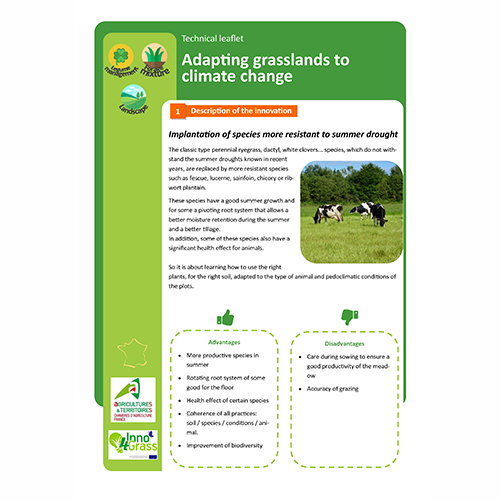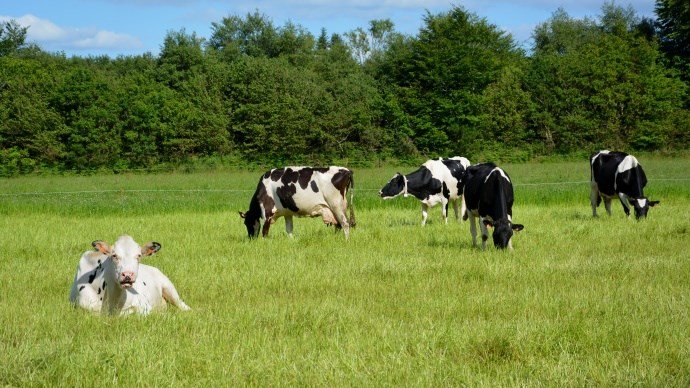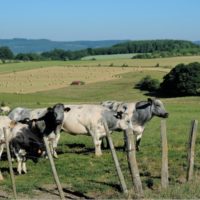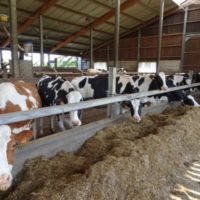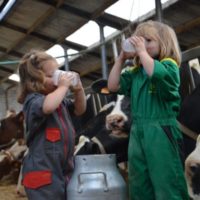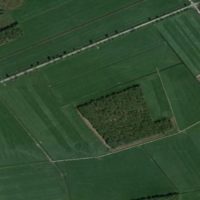Adapting grasslands to climate change
Description
Description of the innovation
Implantation of species more resistant to summer drought
The classic type perennial ryegrass, dactyl, white clovers… species, which do not withstand the summer droughts known in recent years, are replaced by more resistant species such as fescue, lucerne, sainfoin, chicory or ribwort plantain.
These species have a good summer growth and for some a pivoting root system that allows a better moisture retention during the summer and a better tillage. In addition, some of these species also have a significant health effect for animals.
So it is about learning how to use the right plants, for the right soil, adapted to the type of animal and pedoclimatic conditions of the plots.
Advantages
- More productive species in summer
- Rotating root system of some good for the floor
- Health effect of certain species
- Coherence of all practices: soil / species / conditions / animal.
- Improvement of biodiversity
Disadvantages
- Care during sowing to ensure a good productivity of the meadow
- Accuracy of grazing
A few lanmarks
High Fescue
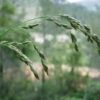
- Resistant to both high and cold temperatures
- Supports all types of soil: acidic, heavy, hydromorphic…
- One of the grasses that grows the most throughout the year
- Long term (about 10 years)
- Spring sowing or late summer
- Sowing at 1 or 2 cm deep
- Monitor the competition at implementation
- Seed rate 10-20 kg/ha in pure stands or 10-12 kg/ha in combination with lucerne (10-15 kg/ha of lucerne)
Sainfoin
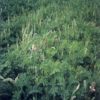
- Two different types of sainfoin are known:
- common or simple sainfoin, which only blooms once a year. It gives only a first cut of fodder and a revival, but it lasts 3 years at least. It is reserved for dry areas or at altitude, mainly for pasture
- the ascending or double sainfoin, which provides 2 to 3 cuts a year. More pro-ductive than the simple type, it is also less durable
- Very resistant to drought and cold
- Can be grazed even after heavy frosts
- Non-bloating fodder
- Rich in tannin
- The sainfoin values calcareous soils (up to pH 8), but fears moist, clayey or acid soils
- Sowing in late summer or spring in bare soil, or under cover of cereal in spring
- The seeding rate is 40 to 50 kg/ha in kernels and 140 to 160 kg/ha in seed pods
Alfalfa
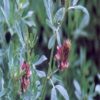
- 45 to 50% of the annual production of lucerne is made during the summer period
- Drought resistant thanks to its taproot
- Forage plant the richest in protein
- Excellent cultural precedent thanks to its nitrogen restitution
- Spring or summer sowing
- Healthy and low acid soils (pH> 6)
- Sowing at 1-2 cm maximum depth
- Sowing dose 15 to 20 kg/ha in pure stands, 10-15 kg/ha in combination with grass-es (bromegrass, cocksfoot, fescue …)
Chicory
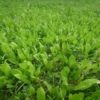
- Perennial plant with taproot
- It tolerates acid soils (pH 5.5 to 6.2) as shallow soils. It has a very good resistance to cold and drought
- Rich in tannin
- Only regular grazing is recommended. It must be grazed at the leafy stage every 15 to 20 days follow-ing the growth of the plant
- Its low dry matter content limits its use to 75% maximum of the ration
- Nitrogen-rich, chicory is recommended in mixture with legumes: the seedling dose is 8 kg in pure stands with 3 kg of TB, or 2 to 3 kg of chicory associated with 25 kg of mixture multispecies
- Its longevity is on average 4 years
Plantain
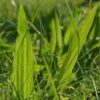
- Tolerant to drought episodes thanks to its taproot supported by a fibrous root system
- Rich in tannins
- Often associated with chicory
- Two sowing periods are possible: in spring or after harvest (from August to September). It is often sown as a mixture for a long time (in this case, provide 1.5 kg / ha with grasses or a mixture of clover and chicory). Some also mix plantain with alfalfa. As for the sowing, it is rather advisable to realize it in the spring than in the autumn because in the latter case, the plantain will not have devel-oped enough to spend the winter
- Sowing at 1cm depth
More information
- http://www.perel.autonomie-fourragere-des-elevages.fr/choisir-un-fourrage/consultez-les-fiches-fourrages/
- https://www.arvalis-infos.fr/recherche-par-culture-ou-theme-@/view-1236-category.html??region=0&culture=8164&theme=158
- http://www.prairies-gnis.org/pages/caracteristiques.htm
- https://www6.inra.fr/climagie/layout/set/print/content/download/3189/32661/version/1/file/Actes+%2B+sommaire.pdf
Additional information
| Domains of innovation | forage mixture, landscape, legume management – Annual legumes, legume management – Perennial legumes |
|---|---|
| Country | France |
| Product type | Technical leaflet |
| Language | English, French |
